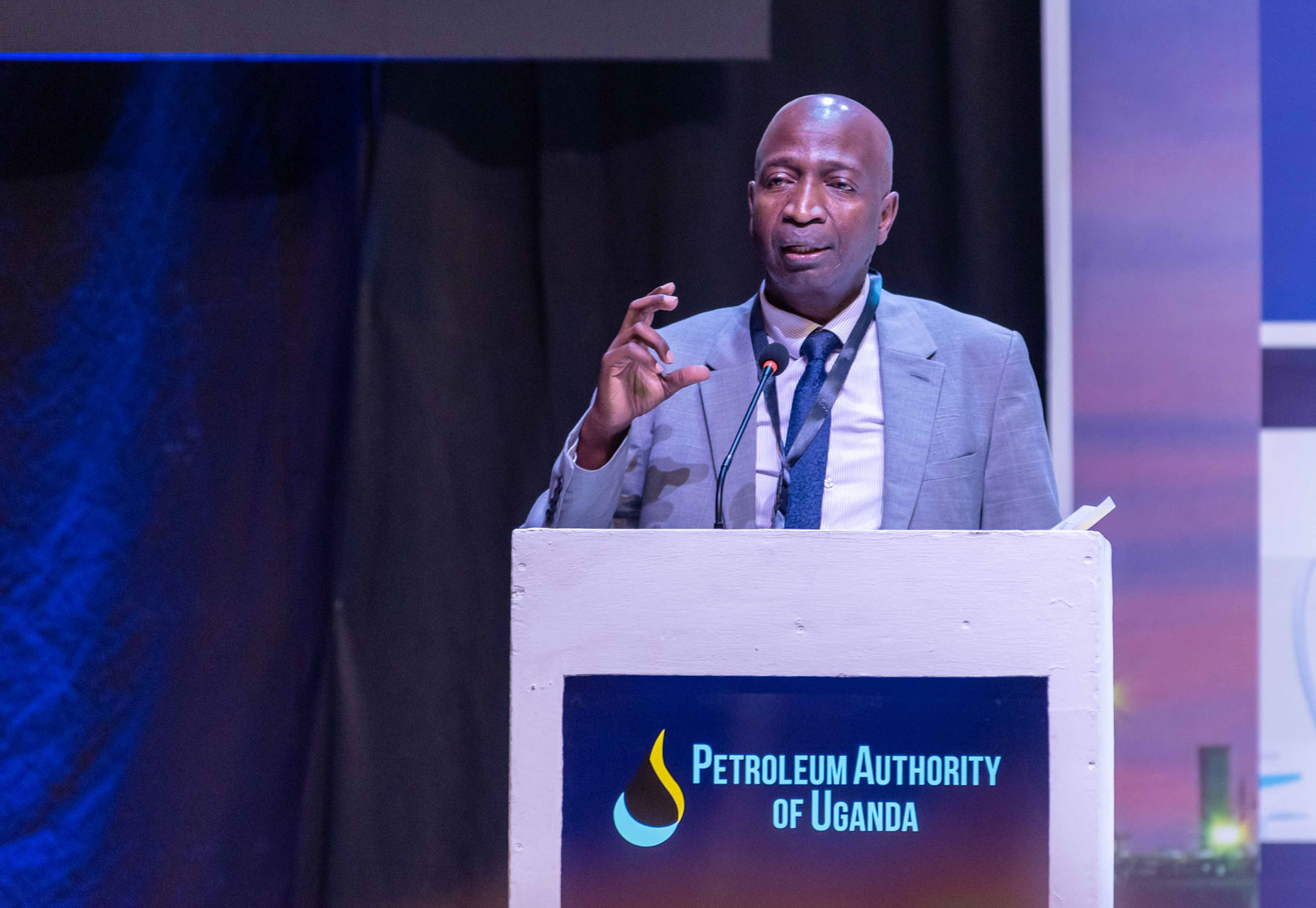Albertine, Uganda:- An estimate of 874 million barrels of oil are expected to be produced under the Tilenga oil project in the next 25 years, according to the development plan. The crude oil produced will then be transported via a 100km feeder pipeline to Kabaale, in Hoima, before termination to the East African Crude Oil Pipeline (EACOP).
This was revealed by the Petroleum Authority of Uganda (PAU), the regulator responsible for monitoring and overseeing petroleum exploration, development, and production in Uganda, which ensures compliance with the country’s industry laws. This was during a three-day visit which began on March 5, 2025. It included site inspections North of the Nile.
According to Mr. Ernest Rubondo, the Executive Director, in this race to First Oil, over 100 oil wells have been drilled. In the project, which is run by Total Energies EP Uganda (TEPU), at least 150 wells are expected to be completed before production begins for First Oil.
“The progress made on the Tilenga project to date is commendable with over 110 wells drilled. The benefits and positive impacts of Uganda’s oil and gas projects are evident,” Mr. Rubondo noted. He supervised activities at the JobiRii (JBR) 02 well pad, civil works at JBR05, JBR09, and JBR10 well pads, restoration efforts at the Nile crossing site, and community livelihood restoration projects in Pakwach Sub-county.
Overall, the project involves the construction of well-pads to drill 420 wells, development facilities to produce, treat and export the petroleum from the fields, and construction of associated infrastructure such as the industrial area, access roads and accommodation camps, among others.
With Ugandan companies increasingly developing the capacity to handle high-level engineering works, operations in the industry are more efficient.
“The level of engineering work in the country is unprecedented. The sector has seen significant progression in the level of participation of Ugandan entities. This has been because of unbundling the civil works and engineering contracts that have given Ugandan entities the opportunity to grow the capacity,” Mr. Rubondo explained.
The feeder pipeline works are also progressing steadily with stringing, welding and anti-corrosion testing. He said, “the project has made significant progress and is on track for first oil production”.
“Activities are going on simultaneously, and the Authority is confident that the oil will be produced optimally and sustainably,” he added.
Works on the enabling infrastructure at the Tilenga Industrial Area (IA) in Ngwedo Subcounty, Buliisa District, are progressing as planned. The IA will host the Central Processing Facility (CPF), Construction Support Base (CSB), Drilling Support Base (DSB), and Construction Camp.
At the Paint and Fabrication Workshop within the CSB in the SINOPEC yard, ongoing activities included cutting, grinding, beveling, welding, fitting, and painting of pipes and other fittings. These components will be dispatched to various well pads where drilling activities have been completed. Once delivered, they will be assembled at the wells to facilitate crude oil production and transfer to the flow lines. Notably, 85% of the assembly work will be completed at the workshop before transportation to the well pads.
Mr. Rubondo was impressed by the number of Ugandans trained by SINOPEC who are part of the crew carrying out these technical tasks. At the CPF, construction of pipe racks and assembly of gas turbines—essential for generating power to run the facilities—were ongoing.
Mr. Rubondo and his team also inspected construction work on the export tanks, which will store stabilized crude oil before its transfer to the feeder pipeline for transmission to the refinery and the East African Crude Oil Pipeline (EACOP).
The laying of feeder pipes within the IA is in progress, alongside ongoing works at the DSB and CSB. Work on the different flow lines South of the Nile, which will connect to those in the north across the river, is also advancing as planned. At the NGR02–NGR01 network, ongoing activities include excavation, bedding, and laying of flow lines.
At the lake water abstraction site, construction of the access road to the jetty has been completed, while the assembly of the barge and platform is underway at the Fabrication Workshop.
The Tilenga and Kingfisher upstream development projects have made significant progress, achieving overall completion rates of over 50% and remaining on track for First Oil Production. At peak, both projects are expected to produce 200,000 barrels of crude oil per day.
Uganda has an estimated 6 billion barrels of oil in place, with approximately 1.4 billion barrels recoverable using current technology.
The development of these upstream projects is advancing alongside the East African Crude Oil Pipeline (EACOP), a 1,443 km heat-traced pipeline that will transport Uganda’s crude oil to the international market via the port of Tanga, Tanzania.
Send us your story or opinion on: dailyexpressug@gmail.com. You can also follow Daily Express on WhatsApp for all the latest news and updates.


